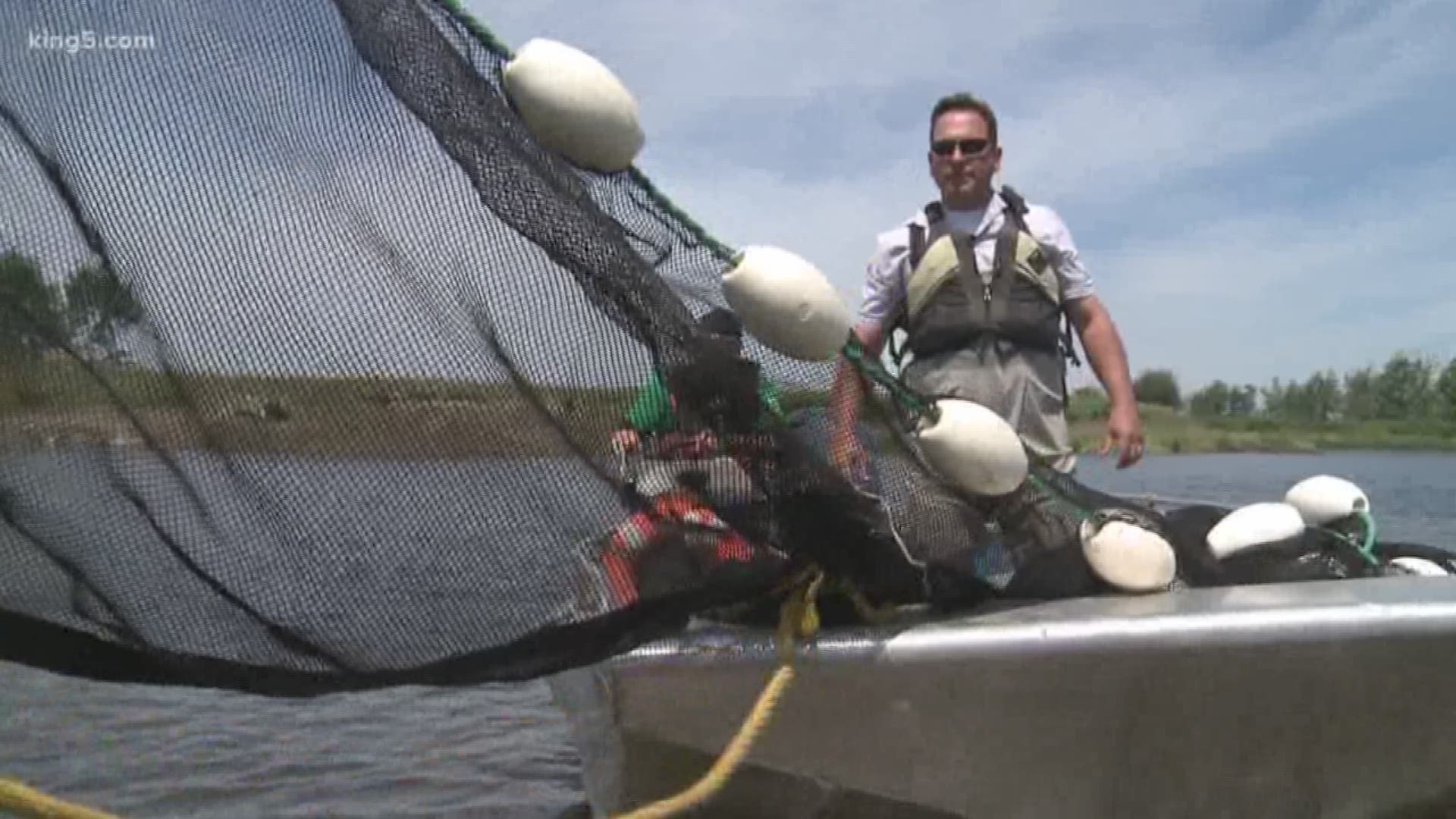MARYSVILLE, Wash. — Four times a month, crews with Snohomish County and the Tulalip Tribes set a net in the Snohomish River Estuary to see what fish are using the area.
"Right now, we’re going to set a net and see if we can find some salmon in a new project," explained Snohomish County Senior Habitat Specialist Mike Rustay. "What we are looking for is what kind of fish are using this site, specifically if salmon are using this site, and if they are bigger or if there are more than we would find in other places in the estuary."
Last year, the tidal channel we visited would have been covered in 6 feet of mud. The area underwent 15 dike breaches, plus the addition of two side channels, all in hopes of restoring salmon habitat.
"This is what salmon needed to survive," Rustay said. "The more of this habitat we can make, the more room there is for the fish, and the more likely they will survive to get big and come back as adults."
Once trapped in the net, crews identify species, measure the fish, and determine if they're wild or from hatcheries.
We found several wild Chinook salmon on this trip.
"It helps us understand how the fish are reacting to the restoration projects that were putting in place," said Snohomish Basin Salmon Recovery Coordinator Gretchen Glaub. "One of the important things to remember is that whether our salmon are hatchery or wild, all salmon need habitat."
Salmon runs have significantly declined around the Snohomish River for several reasons, much of which centers on humans and wildlife competing for the same space. Much of the land was diked to allow for farming, and Glaub said their focus is on working with agriculture to find creative ways to keep farmers feeding people while also restoring waterways for salmon.
Glaub estimates they need $1.5 billion to finish the work.
"While these restoration projects are absolutely something to celebrate, we are way behind reaching our restoration targets," Glaub said. "We need to accelerate the work that we're doing to restore salmon habitat, improve our agricultural viability."
This summer, the estuary will undergo another dike breach at the Mid-Spencer Island site, which is expected to restore 74 more acres for fish.
"What we really want to do is speed things up," said Snohomish County Senior Planner Kathleen Pozarycki. "It’s taking us a while to get these projects going and we don’t have the time right now to continue on the pace that we’re at in order to be able to restore salmon and support orca recovery."

